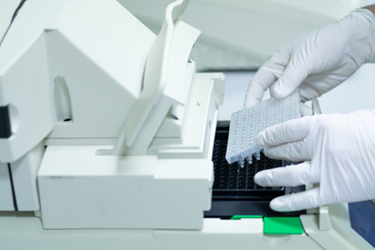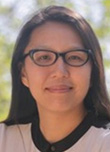A Flexible Mindset For Bridging Between Cell-Based Assay Groups
By Mihee Kim, Ph.D.

Over the years, having transferred some assays from the discovery to product development groups, here are some early considerations for cell-based assays that measure product potency. A little bit of forethought can help set your product up for success in the long run.
- Characterization of the cells: Do your cells change behavior with each passage or with their environment? What are some key aspects you are quantifying to characterize the cells prior to your assay?
- Positive and negative controls: How will you evaluate if the assay itself is acceptable?
- Clear operator and machinery parameters: Do you have a protocol that is clear? Does the machine need special qualifications? How is the operator trained? What is the contingency plan if something fails?
- Sufficient dynamic range: Can you tell the difference between a good batch and a mediocre batch?
Most of our considerations are to keep the assay simple. Simple allows an assay to be transferable with minimal development with each transfer. Simple allows for high consistency and reproducibility. Simple should be simple.
While many researchers dream about getting their idea/target/lead molecule into the clinic, the process to get there is not always straightforward. In the discovery phase, we are so interested in capturing every aspect of a new product that the translatability or transferability of an assay is not the focus. Complexity is almost a necessity because in a world of infinite combinations, we are trying to weed out the bad actors and uncover what may be successful. Even in gene therapies, where it may look superficially straightforward, many things must be optimized. For example, in AAVs, gene variants with optimized open reading frames may be used instead of the most common variant found in PubMed.
The Analytical Bridge Asks The Question, ‘What Does Good Look Like?’
So how do you bridge the gap between the complex and simple? While each transition between phases of drug development can feel jarring, one of the biggest leaps is selecting your lead molecule and transitioning it to expensive GLP toxicology studies. It is the first time that additional regulations and processes are put in place for reporting outcomes and manufacturing materials.
One of the great benefits of working in a large R&D organization is that you are exposed to highly specialized scientists who have worked on perfecting assays in an environment with a steady turnover of new products. This experience gives them a risk tolerance and an understanding that, while they may not have captured every quality aspect of a batch, they understand what “good” looks like.
Two Case Studies On Adapting Analytical Packages
For example, when I was at a company developing a small RNA therapy, the discovery team assessed potency using primary cells from multiple donors and known oligos for positive and negative controls. For end readouts, they used flow cytometry, qPCR, and Western blot. At the time, qPCR assays were not widely available at CDMOs. The technology had been around for many years, but the manufacturing of some specific qPCR reagents and machines was for research, not qualified assays. It felt like an impasse.
We had so many things to adjust to shift from complex to simple. The best lesson I learned from that bioanalytical team was to not panic.
Instead of using primary cells, they screened cell lines for on-target and off-target potency. Simple can be multiple assays instead of a complex all-in-one assay. They purchased a dedicated qPCR machine for a CDMO and developed a hybridization technique, which was much more commonly used as a stopgap while they qualified the qPCR machine. The hybridization technique may not have had the dynamic range that the qPCR had, but it was more than acceptable to progress.
I often reflect on this experience and the bioanalytical team’s ability to break down the problem and remain flexible. Recently, a similar problem occurred in my own group. Like in the previous example, we also had settled on a single machine and technique. We had focused on innovation, but not on the practical nature of the readout. When it came time to develop a more robust assay that could be used to measure drug potency, we adopted a flexible mindset. We consulted with our CDMO partner, got an inventory of what they had, and built something around it as a stopgap. In this case, purchasing machinery and the cost of training the CDMO staff was not worth a small increase in dynamic range, so the stopgap became the standard. Additionally, we didn’t fixate on a single method. Instead, we found the best CRO/CDMO partner who could work with us on multiple aspects of the product, which in turn made processes smoother. By consolidating processes under one roof, you reduce the chances of a shipping mishap significantly.
Conclusion
Like all parts of drug development, communication is key — communication on why you think these aspects of an assay are critical, risks that are associated with simplifying, and risks to a timeline or budget. Everyone wants success, but they are looking at the problem from a different angle. It is this tension that brings out the best solutions.
Remember, there is some regulatory flexibility as bioassays can be phased with your clinical phases. Even global governmental agencies understand that things are not perfect the first time out or that technology changes with time. They want you to have a plan with data. They want you to understand that the stakes get higher, the more patients you treat. You have time to improve and refine your assays, so do not let perfection hold you back.
About The Author:
 Mihee Kim, Ph.D., is a scientist and independent consultant and formerly the executive director of discovery biology at ReCode Therapeutics. Previously, she was the head of gene therapy research at CSL Behring, and, before CSL, she worked for Janssen, now Johnson & Johnson. She received her Ph.D. in biology from Harvard University and completed undergraduate studies at Columbia University.
Mihee Kim, Ph.D., is a scientist and independent consultant and formerly the executive director of discovery biology at ReCode Therapeutics. Previously, she was the head of gene therapy research at CSL Behring, and, before CSL, she worked for Janssen, now Johnson & Johnson. She received her Ph.D. in biology from Harvard University and completed undergraduate studies at Columbia University.
